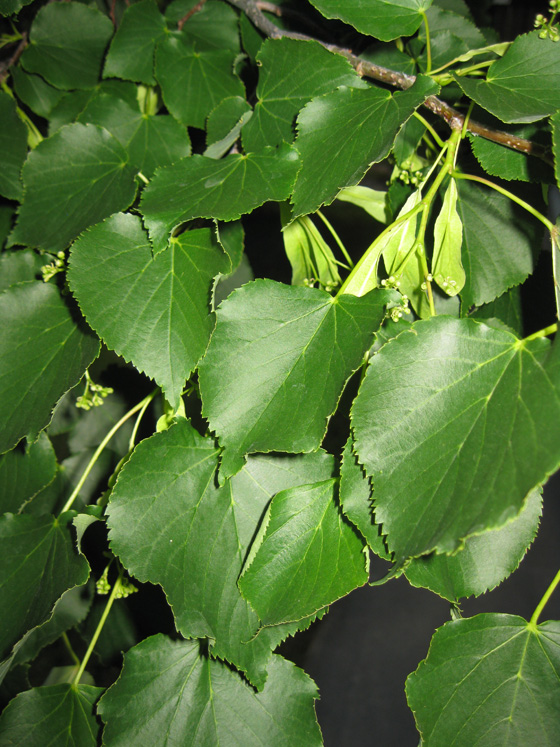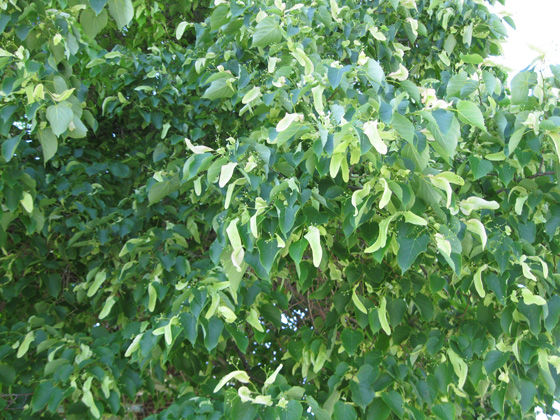| PSC 2620: Woody Trees and Shrub | Course Home | Week 6 |
Tilia cordata - Littleleaf Linden
Plant Viewer
 |
 |
| Littleleaf Linden has a rounded-ovate leaf with an obliquely cordate base. The leaf is dark green and finely serrated. | When the flowers and fruit is forming on the tree, modified leaves that are light green are highly visible all over the tree and give it an interesting texture. |
 |
|
| Clusters of very fragrant flowers blossom in late spring. Later clusters of small fruit is borne on the tree. |
Plant Description
Tilia cordata, or Littleleaf Linden, is a large shade tree, reaching 60-70 feet high with a width a little over half of that. It is a hardy and quick growing tree that performs admirably in some of the worst situations. It has a strongly pyramidal shape when young that matures to an upright-oval form. The branching is denser and more upright than Tilia americana.
The leaf is small to medium in size (1 1/2 to 3 inches long), about the same in width and arranged alternately on the stem. It is more rounded than the leaf of Tilia americana and more finely serrated. The base of the leaf is obliquely cordate in shape. The top of the leaf is a glossy dark green, while the underside is pale green.
The small flowers are light yellow to white in color and hang in drooping cymes during late summer. They are very fragrant and attract plenty of pollinating insects. Keep the limbs pruned up to avoid the clouds of bugs. Clusters of fruit appear by late summer and is smaller and not as hard as that found on Tilia americana. Each fruit cluster has a modified, light green leaf emerging from the base of the cyme. These light green leaves give the Littleleaf Linden and interesting color and texture contrast from the middle of summer until the leaves drop in fall.
Landscape Use
Tilia cordata is a very hardy tree that is ideally suited to use as a parking street tree or as a parking lot tree because of its ability to handle poor soil, pollution, and drought conditions. It also makes a good shade tree in either a residential or commercial setting. I have some neighbors that planted Littleleaf Lindens in their parking strip at the beginning of summer and never watered them. Three years later, all of the trees have survived (albeit with some dieback) and are now starting to thrive.
Points of interest
As with the American Linden, Littleleaf Linden also suffers from aphid infestations in the spring, and the honeydew from the feeding aphids will leave a sticky residue on anything beneath the trees.
Without a doubt, Tilia cordata is becoming overused in our urban landscapes. It can be expected that a dearth of disease and insect problems, similar to what has happened to Ash and Elm trees, will be a problem in the near future.
Notable Cultivars
Greenspire One of the most popular cultivars of Littleleaf Linden, it has a strong central leader and a good symmetrical form. Grows smaller than the regular species, reaching only 40-50 feet high and 30 feet wide.
